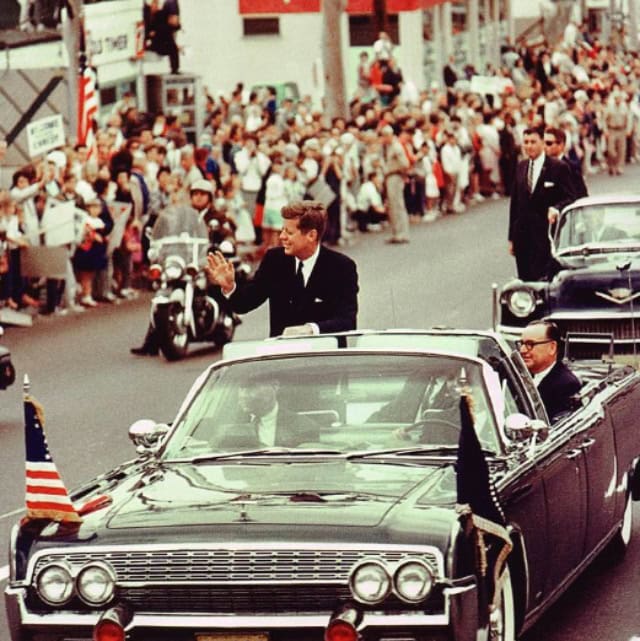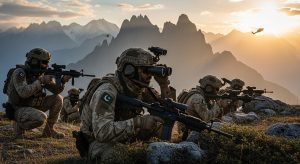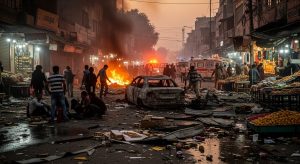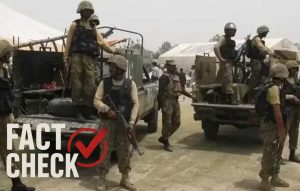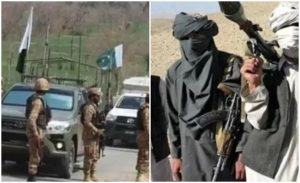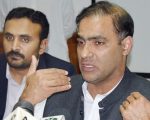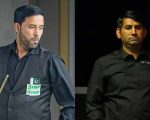When President John F. Kennedy (JFK) was killed in Dallas, Texas on November 22, 1963, Texas law required two things: i) an autopsy be conducted in Dallas and ii) the case be tried in Dallas, Texas. Both these requirements of the law were mandatory. The plotters of the assassination were so powerful that both requirements of the law were flouted. The Secret Service, acting in accordance with the desire of the soon to be President Lyndon B. Johnson (LBJ), took away the body of the dead president by force, amid serious protestation of Dr. Earl Rose of the coroner’s office. The Secret Service indicated that it was willing to shoot anyone who stood in their way! The autopsy was conducted at Naval Hospital Bethesda in Washington D.C. under the watchful eyes of the military by doctors who had never conducted an autopsy before! And LBJ personally intervened on 23rd November to prevent a police investigation in Dallas. He himself called Captain Will Fritz of the Dallas police to stop investigations as, in his view, the murderer had been apprehended.
However, the plotters had the problem of a fatal frontal shot that conflicted with the lone gunman theory, whereby Lee Harvey Oswald had shot JFK from the sixth floor of the Texas School Book Depository building, a building that was at the rear of JFK when he was shot. A man named Zapruder, a Jewish businessman, had filmed the entire scene on his movie camera. Zapruder sold the movie to Time-Life magazine but the owners of Time-Life magazine kept the film and never made it public. The Zapruder film was kept hidden until it surfaced in the 1970s. The film clearly showed that Kennedy received at least one bullet from the front, as his head had jerked backwards under the impact of the shot. But this evidence was not available to the public at that time, and in the years afterwards. It is quite a mystery that when plain clothes and uniformed policemen had confiscated films from everyone’s cameras that they came across, how did Zapruder’s camera and film escape them?
Dr. Charles Crenshaw was the last person to see the body of JFK before the casket was closed in Parkland Hospital, Dallas. He wrote in his book: “I walked to the President’s head to get a closer look. The right occipital parietal portion of his brain appeared to be gone. It looked like a crater – an empty cavity. All I could see there was mangled bloody tissue. From the damage I saw, there was no doubt in my mind that the bullet had entered his head through the front and as it surgically passed through his cranium, the missile obliterated part of the temporal and all of the parietal and occipital lobes before it lacerated the cerebellum.” Thus an experienced doctor could, merely by looking at the head wound, tell that the wound had been caused by a frontal shot. And Dallas doctors were very familiar with bullet wounds and knew well the difference between an entry and an exit wound. A proper autopsy would have merely confirmed that.
Dr. Crenshaw wrote in his 2001 book “Trauma Room One: The JFK Medical Coverup Exposed” that as he stood at the President’s waist he noticed something. “Then I noticed a small opening in the midline of his throat. It was small, about the size of the tip of my little finger. It was bullet entry wound. There was no doubt in my mind about the wound, as I had seen dozens of them in emergency room. At that point, I knew that he had been shot at least twice.” At a press conference held on the same day Dr. Malcolm Perry of Parkland revealed the existence of a neck wound. When asked which way the bullet came, he replied “It appeared to be coming at him.” In his 2022 book “The JFK Assassination Dissected” Cyril Wecht has revealed that Perry “was phoned at home that night by a local Secret Service agent named Elmer Moore, who explained that the doctor had to have seen an exit wound in the throat and berated him for an opinion that would cause the government trouble.” Perry complained about this call to the chief operating room nurse Audrey Bell the next morning and told her that if he didn’t change his story it would affect his status adversely. Audrey Bell revealed this to Cyril Wecht years later.
Since JFK had received a fatal head shot and a neck wound, both by bullets from the front, an autopsy would have revealed the fact very clearly. In fact, it was obvious to doctors in Dallas who had looked the wounds carefully. But the plotters were determined to destroy this evidence, and for this purpose they did something sinister – unknown to the public, they removed JFK’s brain before the so-called autopsy was conducted in Washington D.C. Incredible as it may sound investigators, none of them from the journalistic community, were able to uncover the essentials of what happened. The picture was completed over the years by eyewitnesses who came forward, including doctors and technicians at Parkland Hospital, Dallas and Bethesda Naval Hospital, Washington D.C. Some of the witnesses gave testimony to the House Select Committee on Assassinations (HSCA) and to the Assassination Records Review Board (ARRB) which was set up by an Act of the Congress after the release of Oliver Stone’s famed film JFK.
A decade before Dr. Crenshaw wrote his first book A Conspiracy of Silence, a young researcher, David S. Lifton, a physics student at the time of the assassination, had noted a serious discrepancy between the head wound descriptions of the doctors at Parkland Hospital, Dallas, and doctors at the Bethesda Naval Hospital, Washington D.C. In his ground-breaking book Best Evidence, published in 1980, Lifton wrote: “I had discovered an important conflict in the record. Two groups of doctors saw the President, and in every way that words could be used to describe the wound – size, location, condition of the scalp – their description differed.” When questioned before the Warren Commission Dr. Carrico of the Parkland Hospital, Dallas, stated that the head wound was “about 5-7 cm [2 to 2 3/4 inches] in size, more or less circular.” On the other hand, Navy Commander Dr. James J. Humes of Bethesda gave the following description of the same wound to Commission: “This was so large that a localization of it in a descriptive way is somewhat difficult … its greatest dimension was approximately 13 cm [5 ½ inches] ….” In terms of size and area this is a huge difference. Why was this so?
As if the above discrepancy was not enough, there was an astonishing observation inscribed in an autopsy diagram by Commander Boswell at Bethesda. Lifton states: “And on the autopsy diagram Commander Boswell had inscribed one word inside the 10-by17-cm [3.9 by 6.7 inches] area: ‘missing’…. According to Boswell’s diagram 170 sq. cm (26.35 sq. inches) of the top of the President’s head was simply gone at the start of the autopsy.” So what had happened between the departure of the body from Parkland Hospital Dallas to its arrival at the autopsy table at 8:00 p.m. in Bethesda Naval Hospital?
It is also to be noted that the President’s body had been placed in a bronze casket at the Parkland Hospital. Before directing that the body be moved from Trauma Room One, Dr. Crenshaw had a good look at the President. “All the tubes had been removed from the President, his body had been cleaned, and he had been wrapped in two white sheets. The casket was opened and two nurses placed a clear plastic sheet and then a plastic mattress covering over the green satin lining to keep any blood that might seep from the wounds from staining the inside ….” This description is extremely important and must be kept in mind – his body was wrapped in two white sheets.
Astonishingly two different caskets, one bronze and one aluminum gray, were delivered at three different times at Bethesda after the plane had landed at Washington D.C. “An empty bronze casket” was received “in the front in view of TV camera crews at about 6:55 p.m.” In his 2018 book Jim DeBrosse states: “Unknown to the media and everyone watching the solemn spectacle, Kennedy’s body had been removed to another casket, a simple gray aluminum one, for shipping and secretly delivered to the back entrance of the hospital about twenty minutes earlier.” We now know this because Douglas P. Horne, who was charged with taking testimonies from witnesses to the Bethesda autopsy on behalf of ARRB, obtained a written report from a Marine sergeant-in-charge of the morgue. The sergeant had stated that the aluminum casket arrived at the rear of the hospital at 6:35 p.m. Then at 7:17 p.m. two FBI agents witnessed the arrival of a navy ambulance and the bronze casket at the back of the hospital and assisted in moving the casket into an anteroom. However, the agents were blocked from following the casket into the morgue.” They were probably blocked to prevent them from discovering that the bronze casket was, most likely, empty. Please note that the word morgue in the U.S. denotes autopsy room.
According to the autopsy report filed with the Warren Commission the formal autopsy commenced at 8:00 p.m. There is an 85-minute interval between the arrival of the first casket, a gray aluminum casket, at the rear of the hospital and the commencement of the autopsy. Where was the body in these 85 minutes and what was done to it? And by whom? Jim De Brosse points out: “Three witnesses who saw the body at Bethesda prior to commencement of the autopsy saw the same egg-sized right-rear exit wound in Kennedy’s skull reported by all other witnesses at Parkland. Yet, ninety minutes later, when the body was wheeled into the morgue a second time in the ornamental bronze casket at 8:00 p.m. for the start of the ‘official’ autopsy, most witnesses told the HSCA that they saw a large opening in the top front of the skull – five time larger than the exit wound seen in Dallas.” DeBrosse mentions one FBI agent as having told the ARRB “that nearly half of the president’s brain was missing, and that most of the missing mass was in the right rear of the brain.” Half of the brain was removed prior to the commencement of the formal autopsy to destroy evidence of a frontal shot.
It is therefore quite clear that the condition of the head wound was drastically altered in the 85-minute interval between the arrival of the aluminum casket and the commencement of the formal autopsy. Even the neck wound, which showed a bullet entry from the front, was also altered. Dr. Crenshaw, who saw the photos of the autopsy for the first time in 1990 recorded his reaction in the following words: “The doctors there had recorded the condition of John F. Kennedy’s cranium, a state that had substantially changed during the period of six hours and over a distance of fifteen-hundred miles.” He added: “Great effort had been made to reconstruct the back of the President’s head, and the incision Perry had made in his throat for tracheostomy at Parkland had been enlarged and mangled as if someone had conducted another procedure. No doubt someone had gone to a great deal of trouble to show a different story than we had seen at Parkland.”
Dr. Crenshaw points to other astounding evidence coming from eyewitnesses. He writes: “More disturbingly, there were two eyewitnesses present at autopsy, James Jenkins and Paul O’Connor, who swear that President Kennedy arrived at the naval medical facility in a gray body bag inside a different coffin – one of cheap material.” Remember that in Dallas Parkland Hospital John Kennedy’s body had been wrapped in two white sheets and had been put in a bronze coffin. So how come his body was in a gray body bag when it arrived for autopsy? And how did the body move from the bronze casket into an aluminum one? Those who tampered with the body by taking it out of the white sheets and the bronze casket would never have thought that one day, information will emerge regarding this, and that their sinister act would stand exposed. James Jenkins and Paul O’ Connor also claimed that there was no brain when the body came out of the bag. Dr. Crenshaw is quick to point out that “these men have gone through numerous tests and substantial harassment to be proclaimed credible …”
In the morgue, i.e. autopsy room, there were about a dozen individuals present and there were others in the anteroom including senior military officers. The lead doctors performing the autopsy were Commanders James J. Humes and Thornton Boswell. Wecht points out that neither was a board certified forensic pathologist and both were, as such, not qualified to carry out autopsies. And neither had, in their life, performed an autopsy before! James Jenkins, Paul O’ Connor, and others were also present. Lieutenant Robert Karnei, who was familiar with autopsies, was called by Admiral Galloway and asked to be present at the autopsy but to just act as observer. Karnei was subsequently made to sign a non-disclosure agreement for ten years and at the end of that period it was extended by another fifteen years. So Karnei was silenced for 25 years!
In an interview Karnei did state that he could not be sure who was directing matters in the autopsy room. Cyril Wecht points out that the doctors conducting the autopsy were “prevented from adequately tracking the trajectories of either bullet.” Who prevented them? Wecht writes: “None of the doctors would disclose the name and/or rank of the person who gave them that order, or whether the individual was from the military or a civilian.” Bethesda is a military institution and there is almost no question of any civilian on the spot giving such an order. So if the doctors were not allowed to track the trajectories of the bullets how could they know which direction and at what angle they entered the body?
Cyril Wecht points out: “Although the other military branches – U.S. Air Force, Marine Corps, Coast Guard, and National Guard – had their own medical personnel, the autopsy of President Kennedy mostly seemed to involve top brass members of the Navy and Army. And someone at the highest level of authority made the decision that the president’s autopsy would be performed by doctors who were outside their comfort zone and, in my opinion, easily controlled.” Wecht comments that the autopsy report of President Kennedy is a mere six pages. In comparison the autopsy report of Robert Kennedy was 65 pages long. Wecht, who himself had conducted numerous autopsies in his career, states: “During the writing of this book, I conducted a procedure on homicide-by-gunshot case, which yielded a document of 24 pages without the investigative scene description that would have made it much longer.” In JFK’s autopsy report it was not even spelled out that he died from homicide! “I would not have wanted my name on this document.”
Even though the doctors were prevented from tracking the trajectories of the bullets, and had never before conducted an autopsy, there is an astounding sentence in the autopsy report: “The projectiles were fired from a point behind and somewhat above the level of the deceased.” Wecht notes: “This one sentence is a direct contradiction of the medical evidence and numerous witness statements. It puts into play every action of governmental conspiracy that followed and may even reveal the mechanism for prior planning of the assassination. To maintain their story, the powers that be needed a solo shooter to be in high window of the Texas School Book Depository. And any proof of a second shooter or bullets coming from another direction would be quashed.”
The falsification of the historical record by the conspirators has no end. We may end by pointing out that embalming technician “Tom Robinson testified to the ARRB staff that he saw doctors remove most of Kennedy’s upper skull, and more than ten bullet fragments from his brain, inside the morgue shortly after the body arrived.” Navy corpsman Dennis David signed a receipt for four large fragments, as well as the ten smaller fragments mentioned by Robinson. Jim DeBrosse writes: “After studying the applicable Warren Commission, HSCA, and ARRB testimony and interviews, and comparing them with National Archives, Horne concluded that at least eighteen autopsy photos, and two skull X-rays from angles that would have shown a blow-out at the back of JFK’s head are missing.” Further: “Only two bullet fragments were reported in the autopsy findings and given to the FBI, and their remains are still in the National Archives today.” All other fragments are gone! The National Archives in this context preserve and perpetuate a lie that the CIA et al wish the future generations of Americans to believe. And they have has success because the mainstream media is a propaganda organ of the wealthy elite – the findings of Horne garnered only two stories in the vast American media outlets! The truth is thus buried for the future generations.

